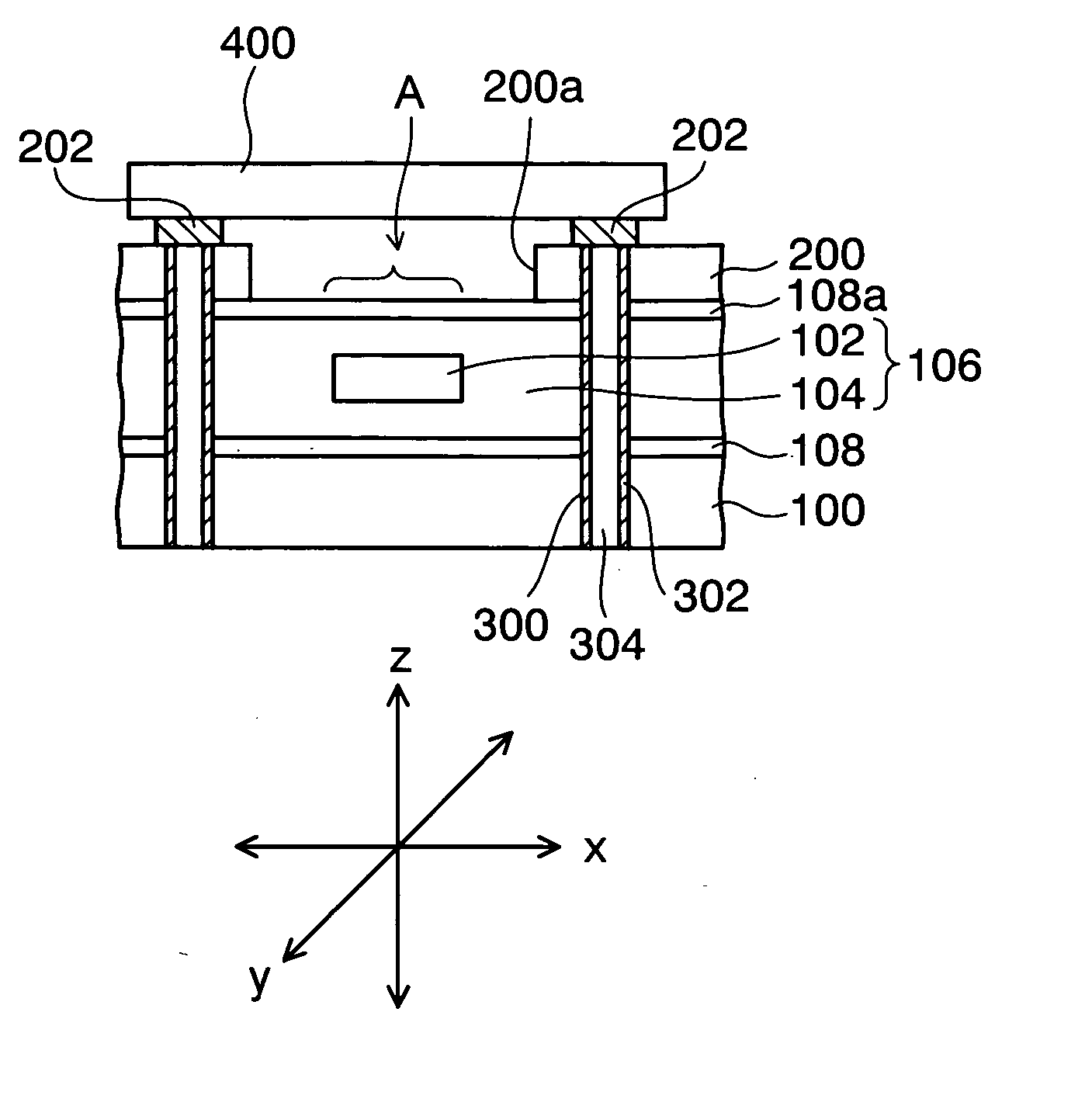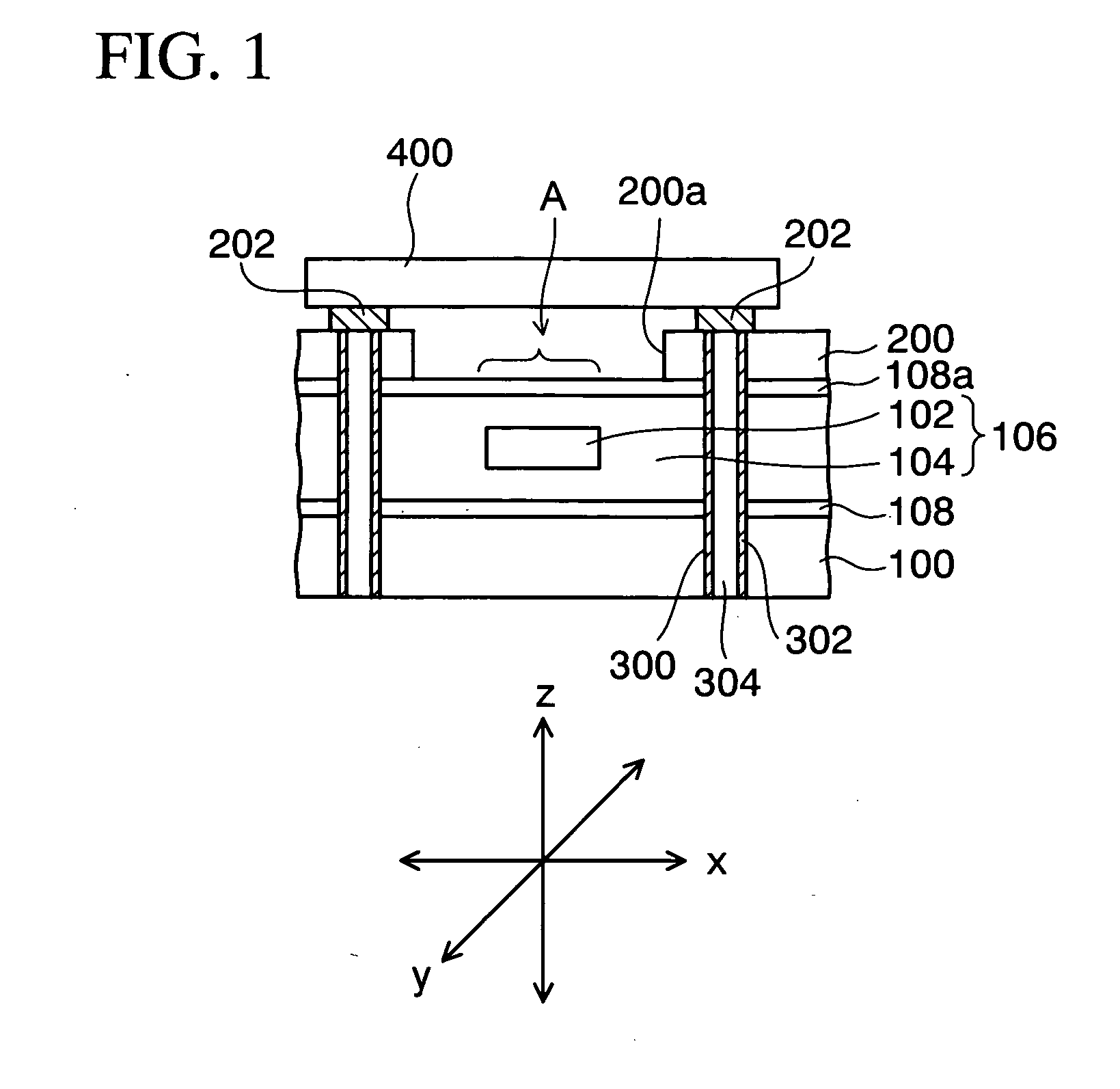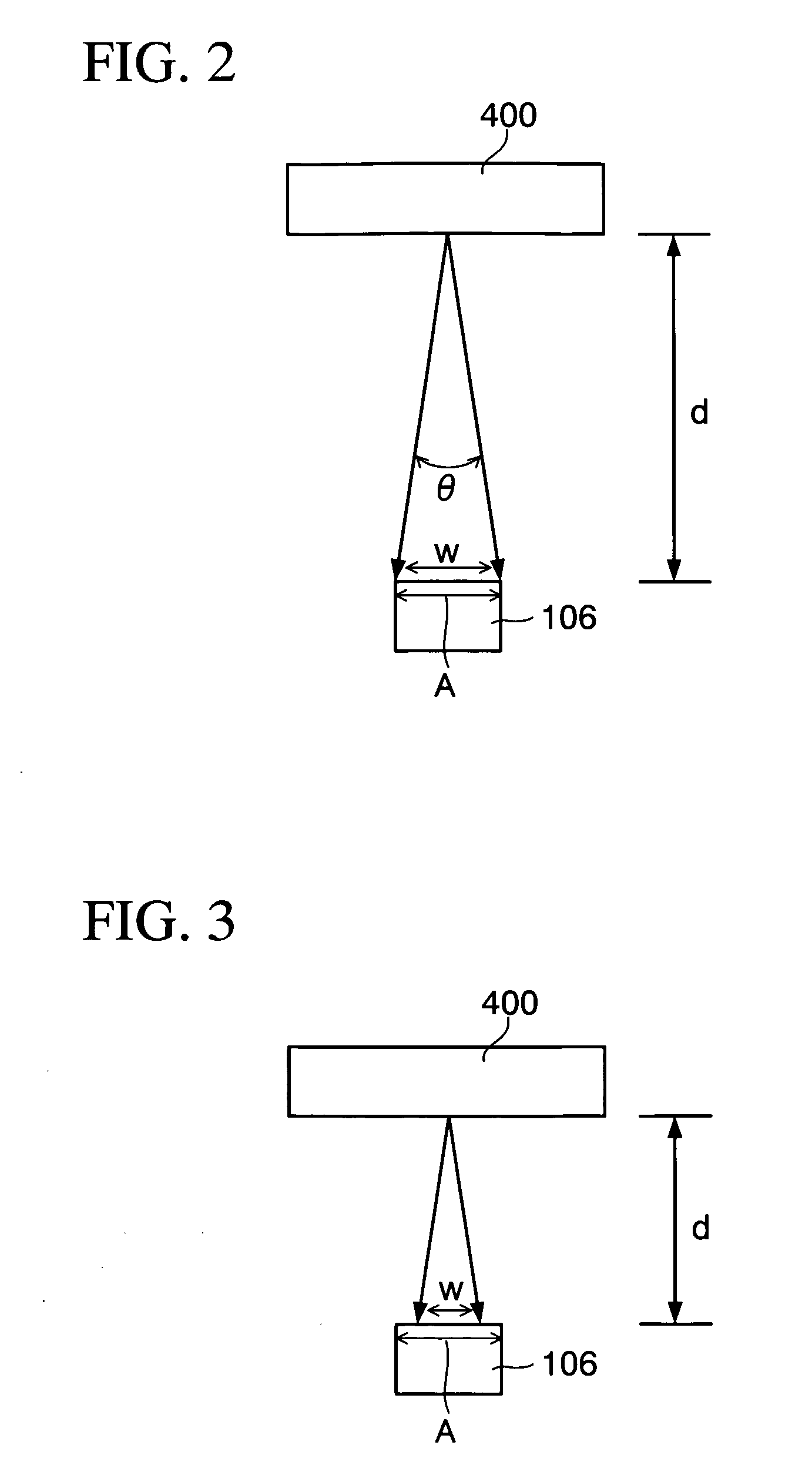Optoelectric composite substrate and method of manufacturing the same
a composite substrate and optoelectric technology, applied in the direction of semiconductor lasers, printed circuit non-printed electric components association, instruments, etc., can solve the problem of not being able to obtain desired optical coupling characteristics, and achieve good optical coupling characteristics and reduce positional discrepancy
- Summary
- Abstract
- Description
- Claims
- Application Information
AI Technical Summary
Benefits of technology
Problems solved by technology
Method used
Image
Examples
first embodiment
[0048]FIGS. 4A to 4I are sectional views showing a method of manufacturing an optoelectric composite substrate according to a first embodiment of the present invention. FIG. 5 is a partial sectional view showing the situation that an optical device is mounted on the same optoelectric composite substrate.
[0049] In the method of manufacturing the optoelectric composite substrate in the first embodiment of the present invention, as shown in FIG. 4A, first a copper foil 10 acting as a temporal substrate is prepared. Then, as shown in FIG. 4B, an optical waveguide 16 having such a structure that a core portion 14 is surrounded by a cladding portion 12 is formed on one side of the copper foil 10. A refractive index of the core portion 14 is set larger than a refractive index of the cladding portion 12. Where the term “on” used in the manufacturing method in the present embodiment denotes “on the lower surface” in the drawings in some cases.
[0050] As a first example of a method of formin...
second embodiment
[0076]FIGS. 9A to 9I are sectional views showing a method of manufacturing an optoelectric composite substrate according to a second embodiment of the present invention. FIG. 10 is a partial sectional view showing the situation that an optical device is mounted on the same optoelectric composite substrate. The feature of the second embodiment resides in that, since the upper surface of the optical waveguide is formed to project from the upper surface of the insulating film, a distance between the optical device and the optical waveguide is adjusted by a height of the connection terminals and a projection height of the optical waveguide. In FIGS. 9A to 9I, explanation of the same steps as those in the first embodiment will be omitted herein.
[0077] In the method of manufacturing the optoelectric composite substrate in the second embodiment, as shown in FIG. 9A, first the copper foil 10 serving as the temporal substrate is prepared, like the first embodiment. Then, as shown in FIG. 9B...
third embodiment
[0109]FIGS. 13A to 13D are partial sectional views showing a method of manufacturing an optoelectric composite substrate according to a third embodiment of the present invention. FIG. 14 is a partial sectional view showing the situation that the optical device is mounted on the same optoelectric composite substrate.
[0110] A feature of the third embodiment resides in that the connection terminals are embedded in the upper-side portions of the via holes such that their upper surfaces and the upper surface of the insulating film constitute a coplanar surface, and the distance between the optical device and the optical waveguide is adjusted based on a height of bumps provided to the optical device. The same reference symbols are affixed to the same elements as those in the first and second embodiments, and their explanation will be omitted herein.
[0111] In the method of manufacturing the optoelectric composite substrate according to the third embodiment, as shown in FIG. 13A, accordin...
PUM
| Property | Measurement | Unit |
|---|---|---|
| width | aaaaa | aaaaa |
| area | aaaaa | aaaaa |
| refractive index | aaaaa | aaaaa |
Abstract
Description
Claims
Application Information
 Login to View More
Login to View More - R&D
- Intellectual Property
- Life Sciences
- Materials
- Tech Scout
- Unparalleled Data Quality
- Higher Quality Content
- 60% Fewer Hallucinations
Browse by: Latest US Patents, China's latest patents, Technical Efficacy Thesaurus, Application Domain, Technology Topic, Popular Technical Reports.
© 2025 PatSnap. All rights reserved.Legal|Privacy policy|Modern Slavery Act Transparency Statement|Sitemap|About US| Contact US: help@patsnap.com



